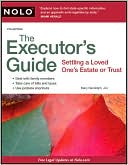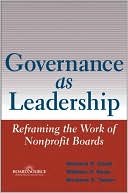Special Needs Trusts: Protect Your Child's Financial Future
The forms and information you need for peace of mind...\ \ If you care for a child or other loved one with a disability, you've no doubt thought about what will happen when you're no longer able to give that care. Fortunately, there's a simple solution to this dilemma -- create a "special needs trust."\ \ Special Needs Trusts shows you how to leave any amount of money to your disabled loved one, without jeopardizing government benefits. It provides plain-English information and forms that let...
Search in google:
Create a special needs trust for a loved one's care with the forms and information you need for peace of mind.If you care for a child or other loved one with a disability, you've no doubt thought about what will happen when you're no longer able to give that care. Fortunately, there's a simple solution to this dilemma -- create a "special needs trust."Special Needs Trusts shows you how to leave any amount of money to your disabled loved one -- without jeopardizing government benefits. It provides plain-English information and forms that let you create a special needs trust by modifying your will or living trust document.Special Needs Trusts also provides a formal letter to the trustee, which explains this very important role, and a personal letter to the trustee, which provides information about your loved one. The 4th edition has been thoroughly updated to reflect the latest changes in the law and provides an expanded list of resources. Plus, find the forms you need as tear-outs and on CD-ROM, including new SSI/Medicaid forms. Support for Families of Children With Disabilities Newsletter Does a good job of explaining what a special needs trust can do to protect the benefits of a person with disabilities.... Even if after reading the book you feel you need a lawyer, you will have the knowledge to approach the subject.
Introduction\ Millions of us love and care for someone who lives with a disability -- a son with Down syndrome, a daughter with cystic fibrosis, a niece with severe autism, a grandchild with schizophrenia, a spouse with emphysema. Such a disability usually means your loved one will require long-term support and medical assistance under the Supplemental Security Income (SSI) and Medicaid programs.\ \ This chapter introduces the special needs trust -- a way to leave property to a loved one with special needs without jeopardizing those crucial SSI and (especially) Medicaid benefits.\ \ This book helps you leave money to a disabled loved one in a "third-party" special needs trust. It does not discuss how to create a special needs trust for property your loved one already owns -- for example, a personal injury award.\ \ Trusts for the beneficiary's own property are called "self-settled trusts," and they are subject to specific federal and state rules designed to keep applicants from sheltering their property in order to meet program eligibility requirements. They are also subject to "payback" rules that require that the state be reimbursed for medical expenses after the trust beneficiary dies.\ \ If you want to create a self-settled trust, you'll need a lawyer's help. See Chapter 10 for information about finding and working with a lawyer.\ \ Why It's Usually a Bad Idea to Leave Money Directly to a Disabled Loved One\ Special needs trusts are used primarily as a means of preserving a loved one's access to government-subsidized health care. The special needs trust is a well-accepted estate planning technique that is logical -- even essential -- given thiscountry's health care system. If our country adopted a universal health care system, the special needs trust wouldn't be necessary, and you could leave property directly to a loved one who has a disability without risking the loss of that person's access to health care.\ \ Health Care for People With Disabilities\ \ There are really three health care systems in America: the private system, Medicare, and Medicaid. These three systems share doctors, hospitals, and other medical resources, but each provides access to these resources in radically different ways.\ \ The private health care system is most frequently available as an employment-related benefit. Great, perhaps, for working people, but usually a nonstarter for those with disabilities.\ \ Medicare, a government-run health care system, pays for most medical services (but not long-term care) required by disabled people who are eligible for Social Security disability benefits because of their own work history or that of an eligible parent. A person need not be poor to get Medicare benefits, but many disabled people, regardless of their income and resources, fail to meet the work-related eligibility requirements.\ \ Medicaid is left to pay for virtually all the health care delivered to people who don't have private insurance or qualify for Medicare. To get Medicaid you must be disabled or over 65. And, in most states, you must be poor enough to qualify for SSI -- an income-support program designed exclusively for people with limited income and few resources.\ \ Many people who don't qualify for Medicaid are left with serious financial burdens from health care costs. For example, if parents leave money directly to an adult disabled child, the gift, if large enough, will disqualify the child from SSI and so from Medicaid until the money is used up. This is where the special needs trust comes in. It allows a person with special needs to enjoy the benefits of property received from others without losing SSI and Medicaid.\ \ Within limits set by federal law, each state can determine who is eligible for its Medicaid program. In most states, someone who is eligible for SSI is also automatically eligible for Medicaid. (Some states give Medicaid a different name: Medi-Cal in California, MassHealth in Massachusetts.)\ \ In 11 states, however, eligibility for Medicaid is determined separately from eligibility for SSI. In these states, the income and resource limits for Medicaid are either roughly the same as for SSI or somewhat lower. So someone could be eligible for SSI but not for Medicaid. These states are listed below. They're called "209 states" after a section of the Social Security Act that allows states to determine Medicaid eligibility separately.\ \ This book assumes that someone who is ineligible for SSI because of excess income or resources is also ineligible for Medicaid. However, in most states, a person with excess income or resources can become eligible for Medicaid by spending down the resources or excess income.\ \ [Medicaid and SSI Eligibility: State Differences] omitted for online sample chapter.\ \ How Inherited Money Can Make Medicaid Unavailable\ \ Inheriting money seems like a good thing. But for someone who relies on SSI and Medicaid, receiving an inheritance can have a disastrous side effect: losing support and, perhaps more important, health care. That's because the SSI and Medicaid programs are available only to people who have low incomes and few resources.\ \ To qualify for these programs, a person's monthly income usually must be no more than about $600 to $800 (it varies from state to state), and the person must own less than $2,000 worth of liquid assets (bank accounts, securities, and the like) and many other types of property. Someone whose property is worth more than the limit is not eligible for benefits. However, importantly, the value of the person's home, car, personal effects, and household furnishings usually are not counted.\ \ EXAMPLE: John's daughter Yolanda was born with cerebral palsy and will likely need lifetime medical benefits under the Medicaid program. John wants to provide for Yolanda after his death but has been cautioned that leaving her property might disqualify her for Medicaid and support under SSI.\ \ John is right to be concerned. An inheritance that would cause Yolanda to exceed the SSI resource limit would probably also make her ineligible for Medicaid. (Most states operate under this rule, as discussed above.) Yolanda would likely see the property she inherits quickly evaporate in a blizzard of medical bills and living expenses until she once again became eligible for those programs.\ \ A disabled person who comes into money must spend it -- or at least enough of it so that what's left doesn't exceed the resource limit -- before reapplying for SSI and Medicaid benefits. The money doesn't have to be spent on support or medical care.\ How a Special Needs Trust Can Help\ How, then, can you make sure that your loved one receives the full benefit of your gift without losing eligibility for Medicaid and SSI? The answer is a special needs trust.\ \ The beneficiary of a properly drafted special needs trust never has a legal claim to property in the trust. This means that the money won't be counted as the beneficiary's resource and so it won't interfere with eligibility for benefits. The funds from the trust can be used for your loved one's benefit for any good or service except food or shelter. (And under the current rules, the trust can even sometimes provide food or shelter without causing the beneficiary to lose Medicaid coverage or most of his or her SSI grant.)\ \ EXAMPLE: Janine, 45, an only child, has had schizophrenia since childhood. She is able to function under heavy medication, but she cannot work and depends on SSI for her income and Medicaid for treatment. Janine's sole surviving parent, Helen, wants to leave Janine her property, which consists of a house and assets worth $75,000.\ \ Helen creates a special needs trust for the sole benefit of Janine, naming herself as trustee to manage the trust while she is alive. Helen writes her will to state that her property should pass directly to the special needs trust rather than to Janine herself. When Helen dies, the house and liquid assets are passed to Jim, the person Helen has named to succeed her as trustee (the successor trustee).\ \ In his new role as trustee, Jim allows Janine to live in the house, liquidates the other assets into cash, and adds the cash to the trust bank account Helen opened when she created the trust. Jim uses the trust funds to supplement what Janine receives from SSI and Medicaid. Because Janine does not control the trust money, it is not counted as a resource by SSI or Medicaid.\ \ Do you need a lot of money to set up a trust? No, though you may decide that a trust isn't worth the trouble if you don't expect to leave a lot of money to the beneficiary. Typically, you would open a bank account in your name as the trustee of the special needs trust with an initial deposit of $250 to $500. Then, you would route property to the trust after your death through your will, revocable living trust, insurance policy, or beneficiary designations for securities or CDs. Even if the trust ends up with $5,000 or $10,000, it may be well worth creating because that money can be stretched over a long period of time. If the new trustee (the person you named as your successor trustee) has even $100 a month over five years to spend on your loved one's supplemental needs, it could make his or her life a lot easier.\ Who Can Benefit From a Special Needs Trust\ A third-party special needs trust can benefit anyone 65 or older who relies on SSI and Medicaid, and anyone of any age who has a disability that qualifies him or her for SSI and Medicaid benefits. If you think your loved one may at some time need SSI or Medicaid, consider creating a special needs trust to take that possibility into account.\ \ You most likely already have a gut feeling about whether or not your loved one qualifies -- or will qualify -- for SSI and Medicaid benefits. If you are providing for all of your loved one's needs now, the issue will most likely arise when the need for government benefits arise -- presumably, after your own death.\ \ The federal programs that provide assistance to disabled adults who are younger than 65 focus almost exclusively on whether someone has the ability to be gainfully employed. In other words, employability defines whether or not someone is "disabled" -- at least for the purpose of qualifying for federal benefits.\ \ For SSI purposes, disability is determined under a complex set of criteria fashioned by the Social Security Administration. Some conditions are considered to be automatically disabling -- Down syndrome, for example. Others (an amputation, for example) require that a number of factors be taken into account, including age, work experience, and the type of function affected by the medical condition.\ \ Chapter 2 discusses disability in more detail, and also discusses some other situations in which you may want to set up a special needs trust for a loved one.\ Who Can Set Up a Special Needs Trust\ Most articles on special needs trusts speak to a parent or grandparent leaving property to a disabled child or grandchild. However, third-party special needs trusts can work for individuals of any age and relationship. You don't have to be the beneficiary's parent or any other relative to set up a trust.\ \ Older couples sometimes set up special needs trusts for the survivor, to take effect when one spouse or partner dies.\ \ EXAMPLE 1: Gavin and Dennis, both 70, have been domestic partners for the past 20 years. Dennis has been diagnosed with Alzheimer's disease and will need Medicaid in the near future. Gavin creates a special needs trust for Dennis, naming himself as trustee, and opens a bank account with a $250 deposit. In his will, Gavin leaves $75,000 to the trust, to be used for Dennis's benefit. When Gavin dies, the person Gavin names to succeed him as trustee will be able to supplement Dennis's SSI and Medicaid benefits with money from the trust.\ \ EXAMPLE 2: Rolf and Juanita are both in their 60s and about to be married. Rolf suffers from severe rheumatoid arthritis and has been receiving SSI and Medicaid for ten years. Juanita has a stock portfolio worth $50,000 in her name alone. She wants to leave the stock to Rolf but doesn't want him to lose his SSI or Medicaid. Juanita creates a special needs trust naming herself as trustee and uses a transfer-on-death beneficiary designation to leave the stock to the trust. When Juanita dies, title to the stock passes to the trust and the person Juanita has named to succeed her as trustee can manage the stock to enhance Rolf's quality of life.\ \ You can even set up a special needs trust for someone to whom you're not related at all.\ \ EXAMPLE 3: Agnes, age 75, leads a simple life in the house she grew up in. She puts in volunteer time at the local Boys and Girls Club and The Arc (an organization dedicated to the developmentally disabled). Unbeknown to the community, Agnes is worth several million dollars because of property she inherited from her father and mother. She gives handsome annual donations to the groups she works with, but has never given much thought to how to leave her property.\ \ When Agnes learns about special needs trusts, she decides to create special needs trusts for 12 disabled children she has grown close to in her volunteer work. In her will she directs that at her death, each trust will receive an equal share of her property. If during her life she meets other children who she wants to include, she can amend her will (through a codicil) to add them. She can also change her mind, revoke the will, and leave her property in a different way.\ \ Alternatives to a Special Needs Trust\ Special needs trusts aren't the right solution for every family. Trusts can cost time and money to administer, and the person serving as trustee may be called on to make difficult decisions about investing and spending trust assets.\ \ Leaving Money to a Friend or Relative\ \ Rather than rely on a special needs trust, you may be inclined to leave some money to a friend or relative who agrees to watch out for your loved one's needs after your death.\ \ If you don't expect to leave much property to your loved one, this approach may be preferable to setting up a trust that will last only a year or two before the money has been spent. You could attach a letter to your will or living trust explaining what you are doing and request that the money be spent in a way that doesn't interfere with your loved one's SSI and Medicaid benefits.\ \ Unfortunately, this informal approach has several potentially major downsides. The fact is, money that legally belongs to one person will not necessarily end up benefiting someone else, no matter how honorable the intent at the outset.\ \ Because the person to whom you leave the property will own it outright, it would be subject to that person's creditors in a lawsuit or bankruptcy. The property may pass to that person's heirs if he or she suffers an untimely death, or it may go to a spouse in the event of a divorce. Also, the laws that govern someone who is an actual trustee (described in Chapter 5) don't apply in an informal relationship. In other words, if the person spends the money for a new car instead of your disabled loved one's needs, there is nothing that anyone will be able to do about it.\ \ Leaving Money Directly to Your Loved One\ \ As a general rule, it may be better to leave property to your loved one outright if he or she is unlikely to qualify for SSI and Medicaid and can be trusted to manage the funds in his or her own behalf.
1. Providing for a Loved One With a Special Needs TrustWhy It's Usually a Bad Idea to Leave Money Directly to a Disabled Loved OneHow a Special Needs Trust Can HelpWho Can Benefit From a Special Needs TrustWho Can Set Up a Special Needs TrustAlternatives to a Special Needs TrustHow the Special Needs Trust Works -- Nuts and BoltsTerminating the Trust2. Who Can Benefit From a Special Needs TrustSomeone With a Permanent DisabilitySomeone Who May Get BetterSomeone Who May Need a Special Needs Trust LaterSomeone Who Is Eligible for Medicare or SSDI3. How Trust Funds Can (and Cannot) Be UsedSSI Income and Resource Limits: An OverviewAssets in the Special Needs TrustWhat Trust Funds Can Pay ForGifts of CashPayments for Food or ShelterGifts of Food or Shelter From Other SourcesWhat the Trustee Cannot Pay For: Countable Assets4. Getting Money Into a Special Needs TrustWhat Assets to Put Into a Special Needs TrustMaking Gifts to a Special Needs TrustHow Much Money Will Your Loved One Need?How to Leave Money to a Special Needs TrustDon't Add the Beneficiary's Property to the Trust5. The Trustee's JobThe Trustee's Basic DutiesWorking With a Guardian or ConservatorInvesting Trust PropertySpending Trust Money for the BeneficiaryManaging a Remainder Beneficiary's PropertyPreserving Eligibility for SSI and MedicaidPaying TaxesGoing to CourtThe Trustee's Duties Letter6. Choosing TrusteesAn Overview of Your OptionsSigning Up for a Pooled TrustPicking the Ideal TrusteeNaming the InitialTrusteeNaming Successor TrusteesNaming CotrusteesHiring a Corporate or Professional Trustee7. Joining a Pooled TrustAn Overview of Pooled TrustsCan You Use a Pooled Trust?How Pooled Trusts WorkJoining a Pooled TrustWhat Happens When the Trust EndsIf the Pooled Trust Stops Operating8. Creating Your Special Needs TrustDrafting the Trust DocumentMaking the Trust Legal and EffectiveKeeping the Special Needs Trust Up to DateSample Special Needs Trust9. Finalizing and Funding Your Special Needs TrustMaking Your Trust LegalTaxesOpening the Trust's Deposit AccountIncorporating the Trust Into Your Estate Plan10. Where to Get More HelpLawyersParalegalsCertified Financial PlannersSSA and Medicaid PersonnelKeeping Up to DateBooksGlossaryAppendix A: Pooled TrustsAppendix B: Letter to Trustee/Trustee's DutiesLetter to TrusteeManaging a Special Needs TrustDocumenting the Authority of Successor TrusteesAppendix C: Sample Beneficiary Information LetterAppendix D: How to Use the CD-ROMInstalling the Form Files Onto Your ComputerUsing the Word Processing Files to Create DocumentsUsing PDF Files to Print Out FormsList of Forms Included on the Forms CD-ROMIndex
\ Support for Families of Children With Disabilities NewsletterDoes a good job of explaining what a special needs trust can do to protect the benefits of a person with disabilities.... Even if after reading the book you feel you need a lawyer, you will have the knowledge to approach the subject.\ \ \ \ \ Support for Families of Children With Disabilities NewsletterDoes a good job of explaining what a special needs trust can do to protect the benefits of a person with disabilities.... Even if after reading the book you feel you need a lawyer, you will have the knowledge to approach the subject."\ \








